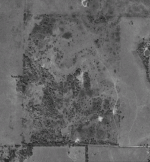gim
Well-known member
Take a trip to northern MN and then report back with how many pheasants you see.Is that half loaded with pheasants or nah?
Take a trip to northern MN and then report back with how many pheasants you see.Is that half loaded with pheasants or nah?
Take a trip to northern MN and then report back with how many pheasants you see.
Obviously pheasants can't live in heavy timber. Northern MN is literally almost nothing but heavy timber.I've been. It's not a great supporting argument for "pheasants need trees to survive".
This was kind of what I had in mind when I made the original post. I don't want to pheasant hunt a forest. But it is nice to see a row or two of pines on certain properties. Maybe they don't even have to plant them, but I've seen some nice pine rows sawed down. South Dakota seems to have nice shelterbelts on the state land out there.Evergreens are good for winter cover. The rest are better cut.
I don't agree with clear cutting Russian olive!!When you manage a wildlife area for hunting, you need to make the "best use" of what should be adapted to be there. The habitat type that is most endangered in the United States is native grasslands. There is significant value to extensive grassland tracts. Unfortunately, our predecessors did not know what we know now. They planted tree species that aggressively expand into prairie habitat, degrading that habitat and adding extensive costs to managing those grasslands. Mechanical removal is the most expensive method to use! Fire is probably the least expensive. However, these aggressive tree varieties are often vigorous resprouters and respond to fire with more aggressive resprouting. This control is the highest cost in managing for wildlife. The reason for getting rid of all of them is that the seed source grows exponentially as does the number of invaders over time, thus exponential growth in costs as well. Managers aren't against timber, it is great habitat and we want just that where there is supposed to be timber. On my area, I want my grasslands to be grasslands! I want my timber to be native and in a physical form that will benefit turkey and deer as well as quail and pheasants. Now, if you overlay quail and pheasant habitat adaptivity over a graph of deer and turkey adaptivity, the deer and turkey have the much broader adaptive niche. As the plant community goes through natural succession from bare ground, to annual plants, to perennial plants, to shrubs, and finally to woodlands, the ability of quail and pheasant to survive in those habitats declines. A land manager's job is to manipulate habitats toward their most productive state. The wildlife managers are just doing what they need to do to keep upland birds on the ground for hunters. Where woodland habitats should exist, you will find them managing those with a similar goal, being the most productive.
Again, it is a cost thing. They will continue to expand and you continue to spend your habitat dollars doing work on that same thing over and over. It is much easier to find some other species to plant that will provide the positives that Russian Olive's do without the negatives.I don't agree with clear cutting Russian olive!!


I will say this.Imo owls kill pheasants. They love Russian olive, and Ash trees.I'm nowhere near an expert? I know nothing. But I do know that a certain landowner we hunt on in SD has an owl living in her wooded area by her house along with about 200 pheasants....ALL THE TIME. If that owl was that much of a threat, why do those pheasants stay there?
Before someone asks, she found the owl injured, nursed it back to health, named it and released it. It stays around her farm lot....otherwise....
I don't disagree. I'm not arguing that trees are good or bad? But I sure see a lot of pheasants in and around trees.I will say this.Imo owls kill pheasants. They love Russian olive, and Ash trees.
They like Russian olive and spruce. They don't like hardwoods, the way turkeys do.I don't disagree. I'm not arguing that trees are good or bad? But I sure see a lot of pheasants in and around trees.
